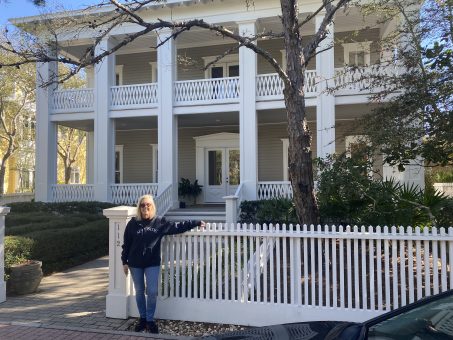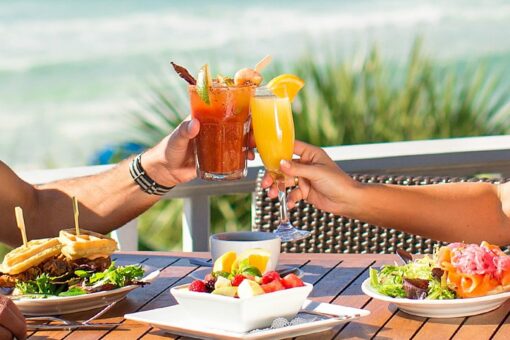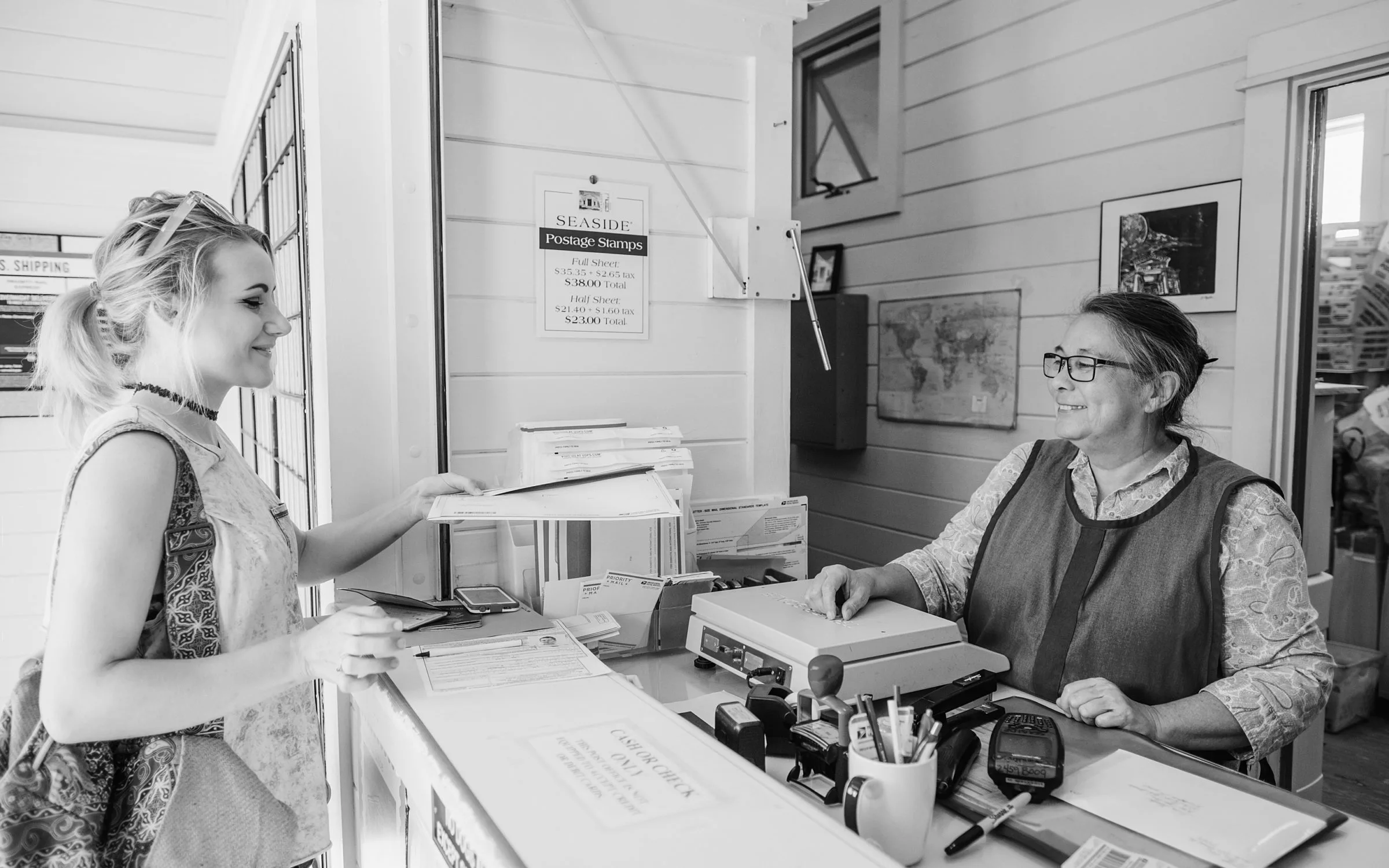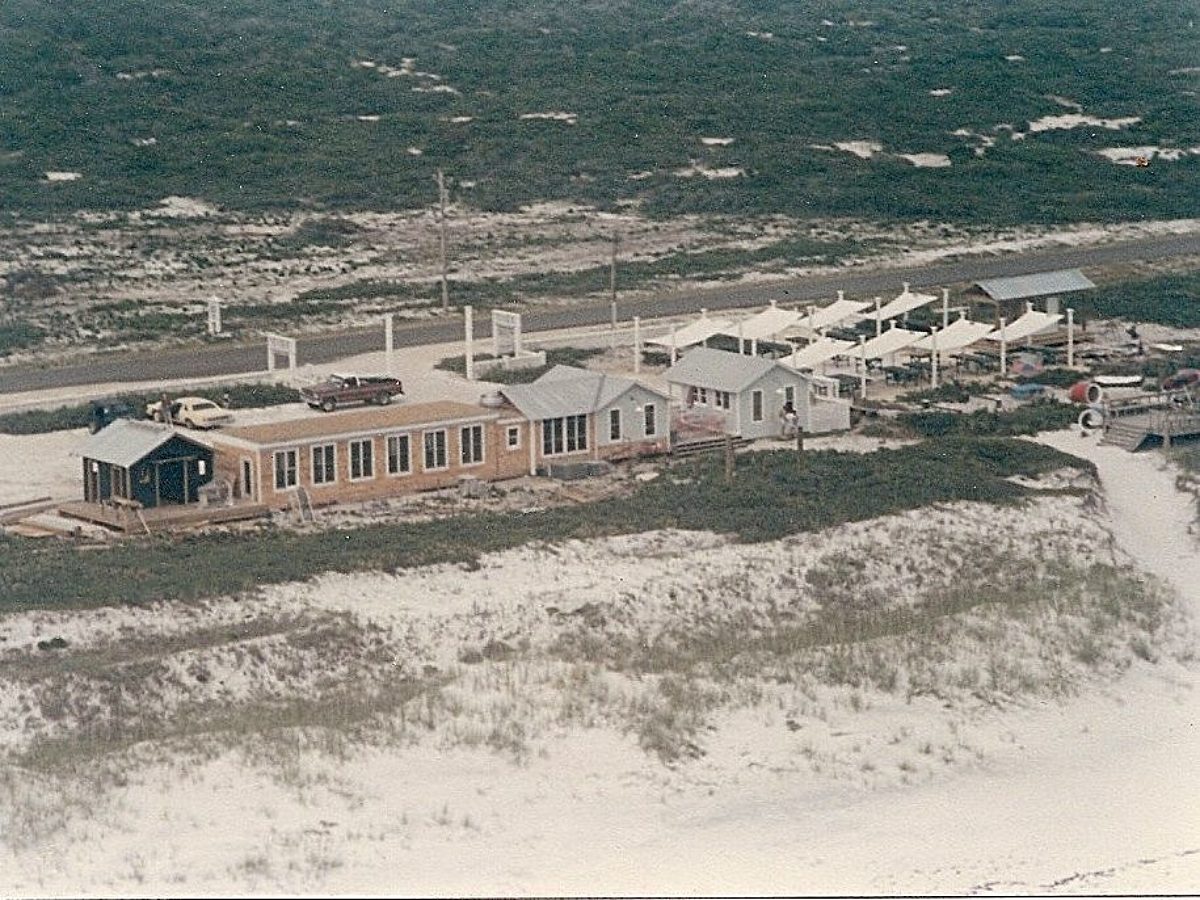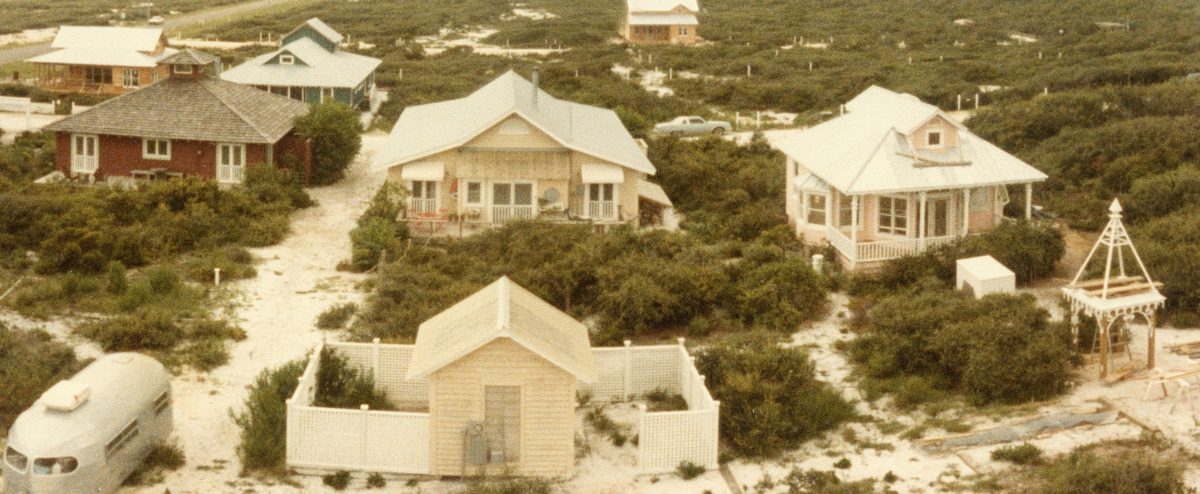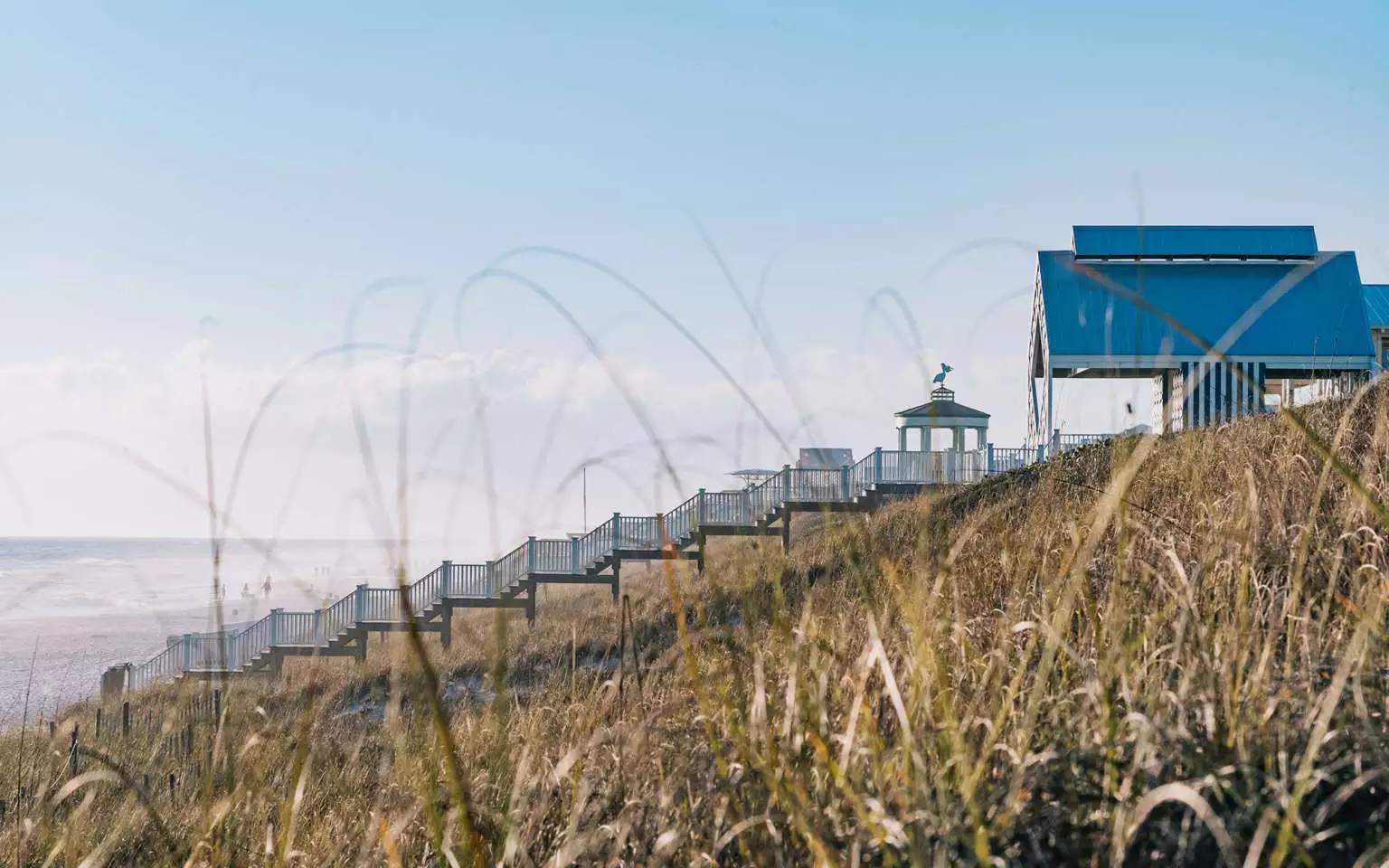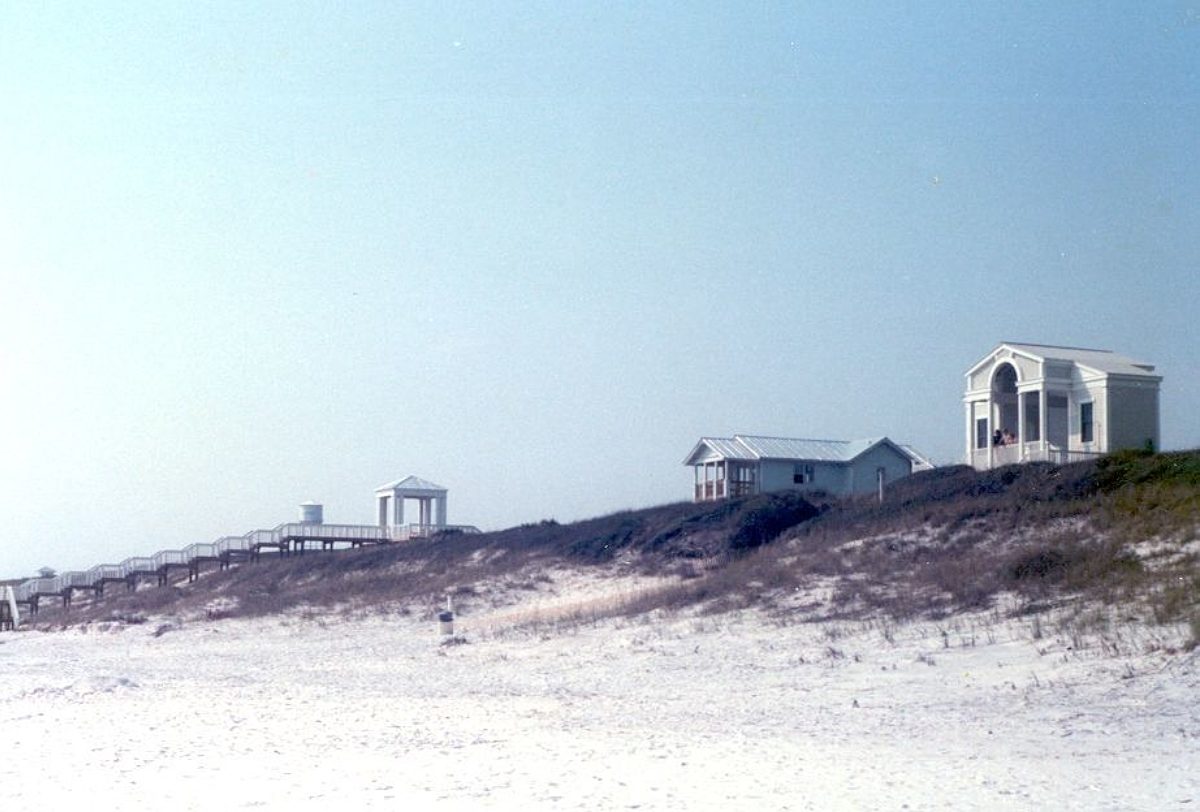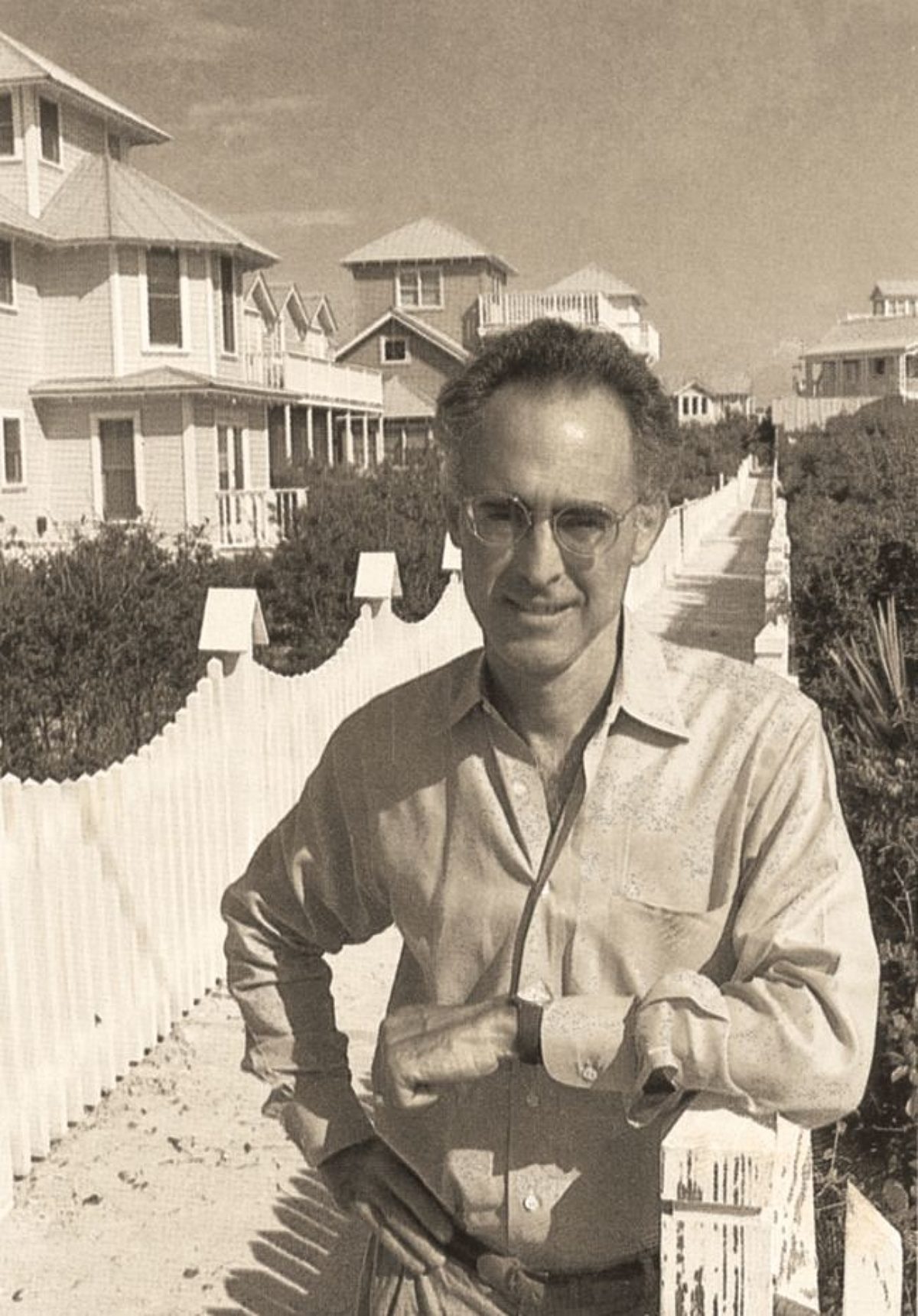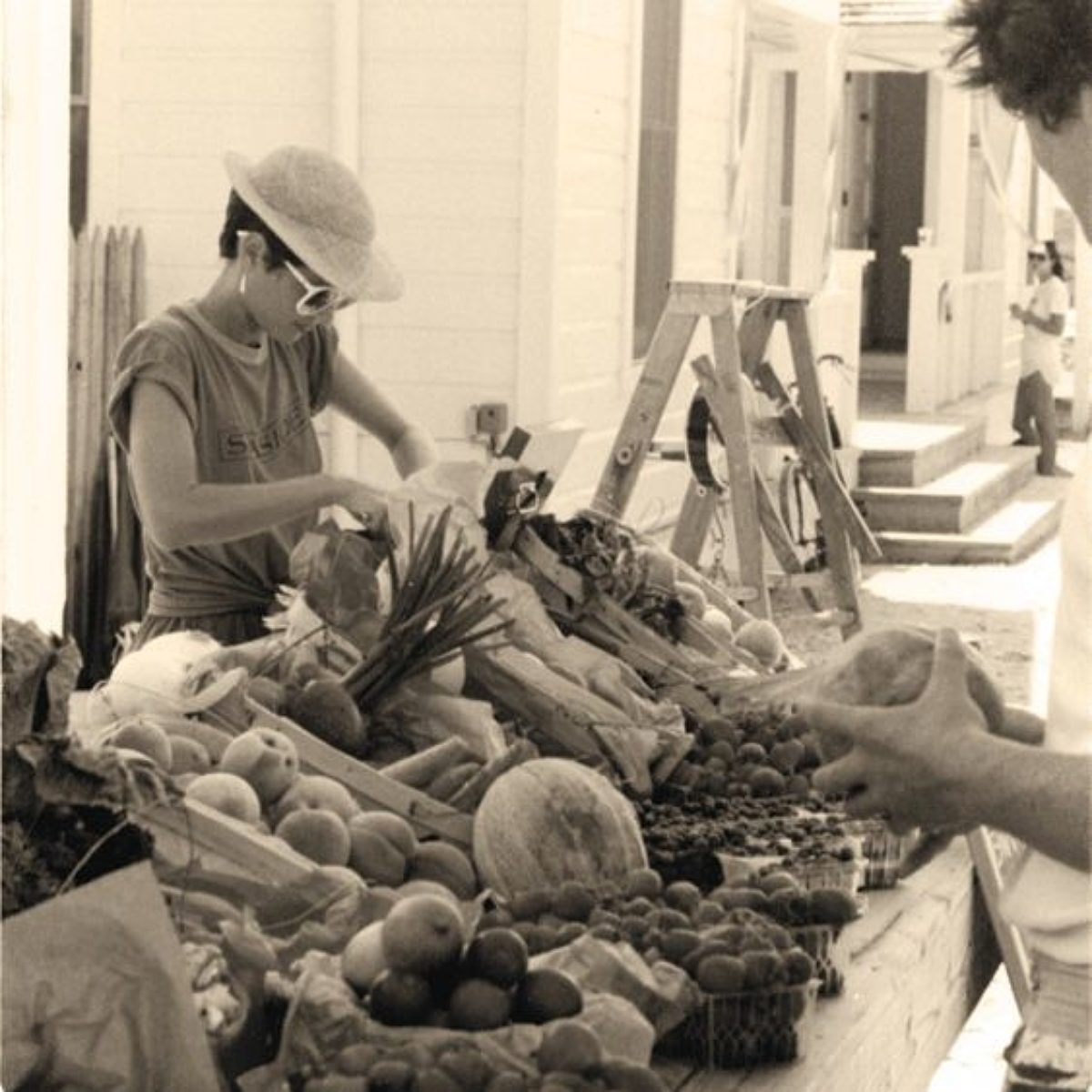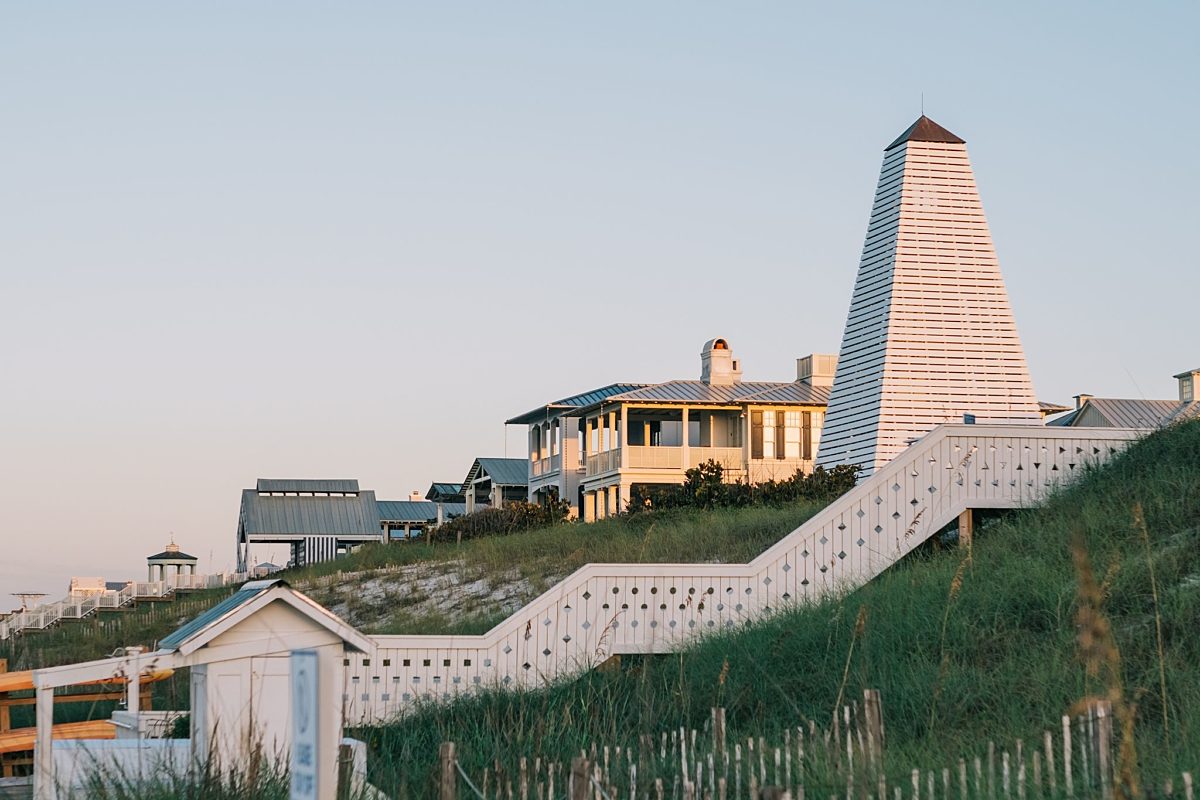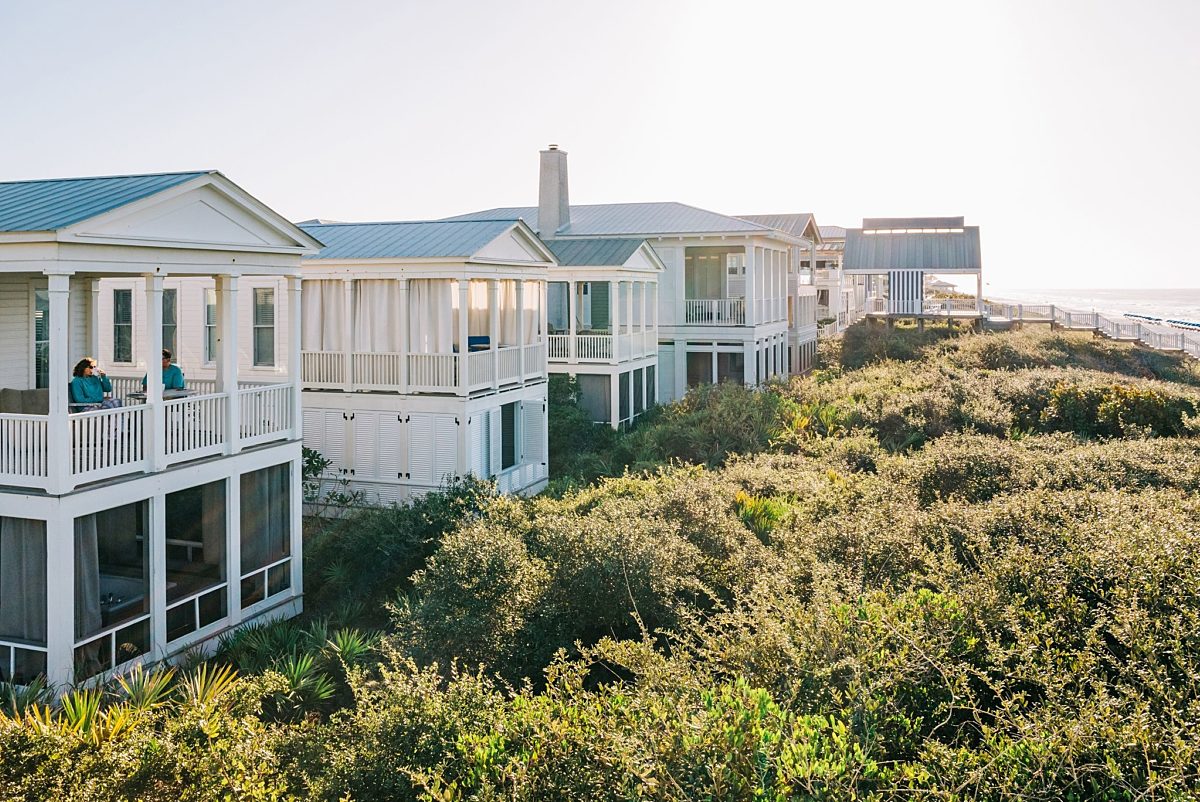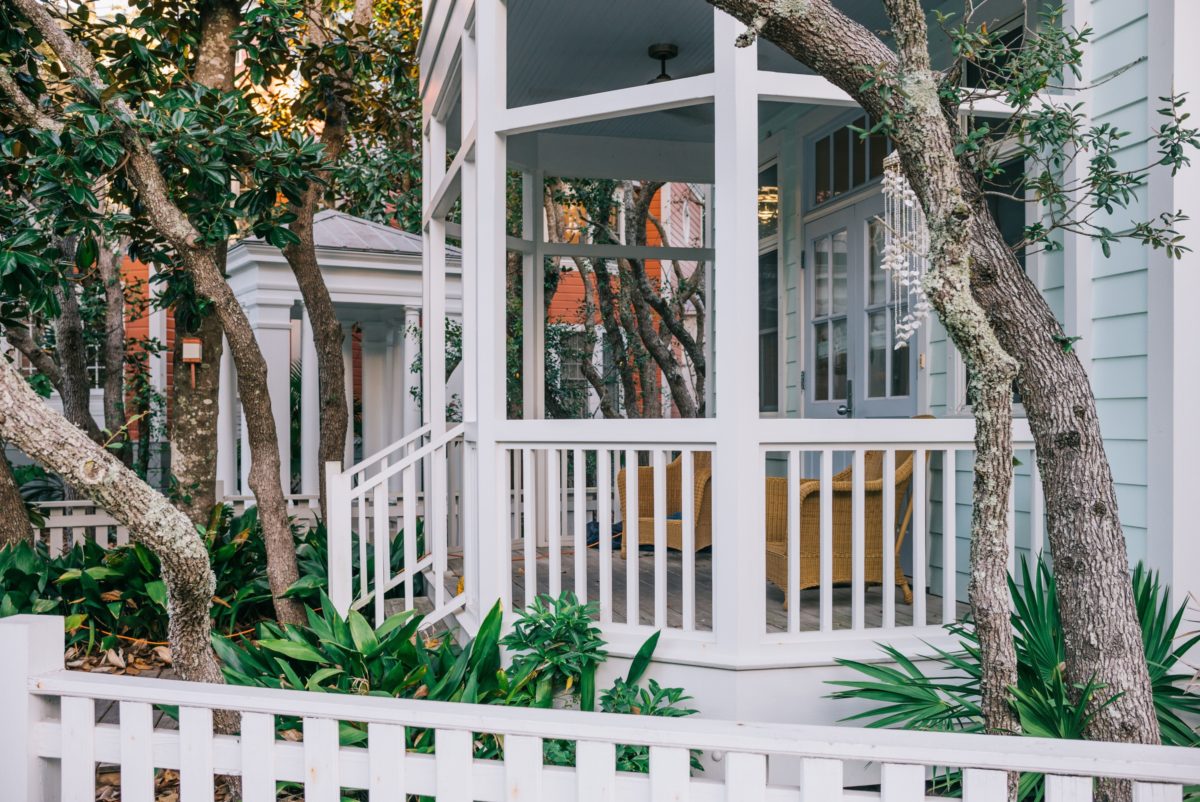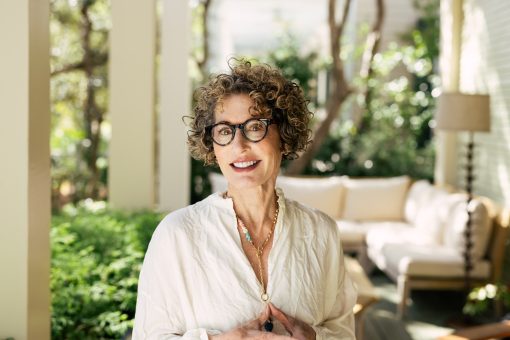Search for: cottages
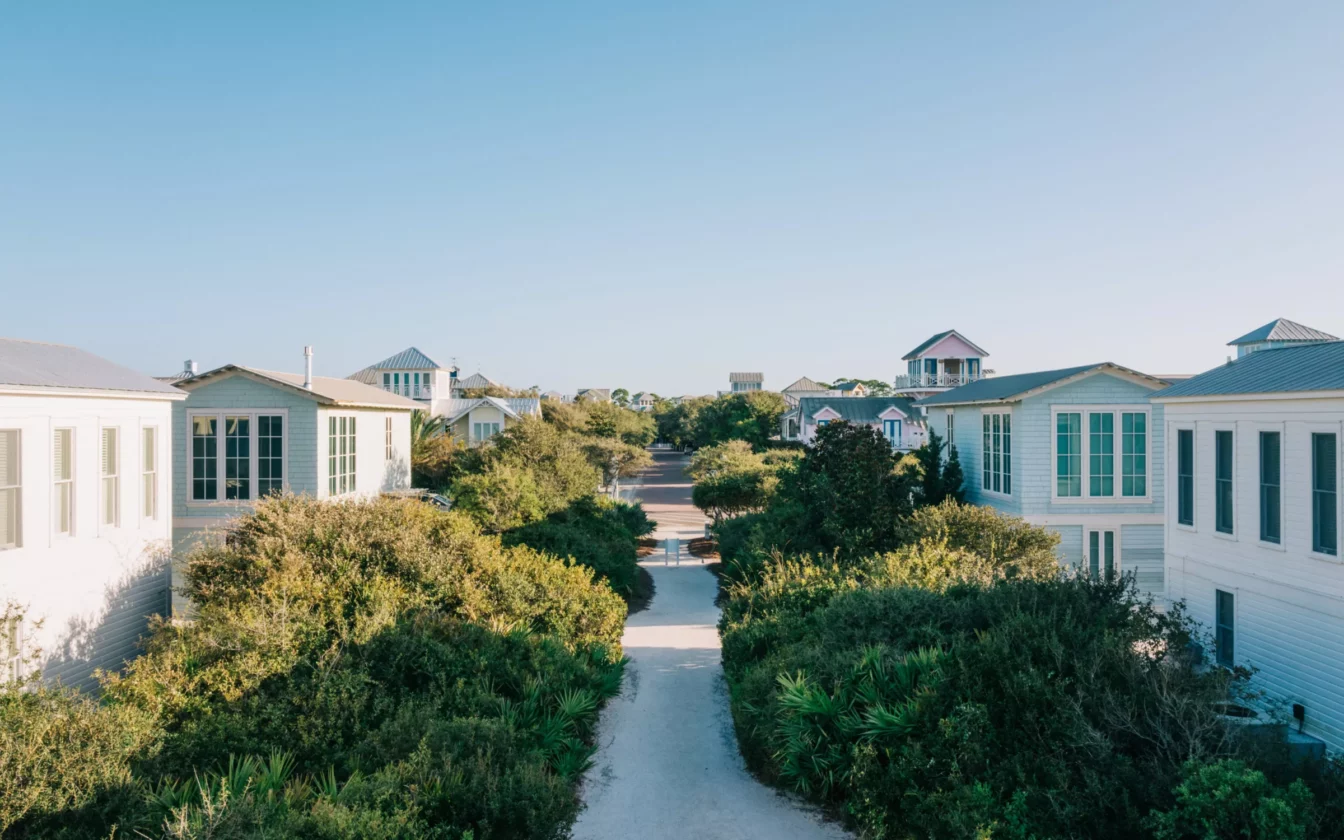
Xeriscape in SEASIDE®
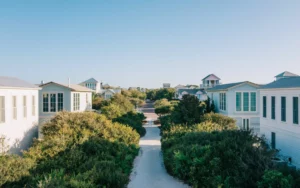 As the populations of native insects, birds and other wildlife are suffering the consequences of overly-manicured lawns, many homeowners throughout the country are increasingly incorporating native plants and trees to provide food for local and migratory bees, butterflies and birds.
As the populations of native insects, birds and other wildlife are suffering the consequences of overly-manicured lawns, many homeowners throughout the country are increasingly incorporating native plants and trees to provide food for local and migratory bees, butterflies and birds.
A New York Times article noted that in 2020 there was a 50 percent increase in people creating wildlife gardens, and that localities and states are enacting pollinator-friendly laws.
When Seaside was conceived, the town’s landscape architect, Douglas Duany, insisted that the majority of existing vegetation be protected. The practice of xeriscaping (from the Greek words Xeros, meaning dry and scape, meaning view) uses native plants that require little maintenance due to their ability to adapt to their environment.
In the book, “Reflections on Seaside,” author Dhiru A. Thadani writes:
Vegetation in the private realm has been limited to native species, in most cases existing prior to development, and does not require fertilizers or watering to thrive. Going a step further, Seaside banned the use of turf grass on private residential properties. The accepted ground cover on residential lots is pine straw. Grass is only permitted in the civic realm: the Central Square; the Lyceum Green; Forest Street Park; the forecourt to the Seaside Chapel; and the croquet field in the northeastern recreational area.
The preservation of the existing native plants and xeriscaping aligned with Robert Davis’s frugal and debt-free development goals. This was a less expensive proposition and lots could be sold without having to be cleared. It also supported his romantic notion of vernacular-inspired rustic wood cottages sprinkled across a natural landscape of native plants.


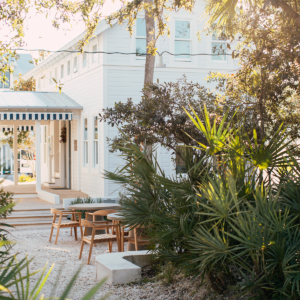 The unintended consequence of building on a tract of land that had been covered with native species is that the vegetation thrived over the past 40 years. These once stunted scrub oaks and other native species have flourished in areas where they are protected by buildings from the harsh Gulf breezes. The shield has permitted them to grow substantially tall, to the point of obscuring the architecture. In unprotected areas, the plants stayed low to the ground, receiving a haircut from the harsh winds.
The unintended consequence of building on a tract of land that had been covered with native species is that the vegetation thrived over the past 40 years. These once stunted scrub oaks and other native species have flourished in areas where they are protected by buildings from the harsh Gulf breezes. The shield has permitted them to grow substantially tall, to the point of obscuring the architecture. In unprotected areas, the plants stayed low to the ground, receiving a haircut from the harsh winds.
At first, many residents were unaccustomed to the natural, unmanicured look of xeriscape. However, once they accepted that they did not have to water the vegetation and appreciated the low maintenance, they were in full support of only planting native species. Over the
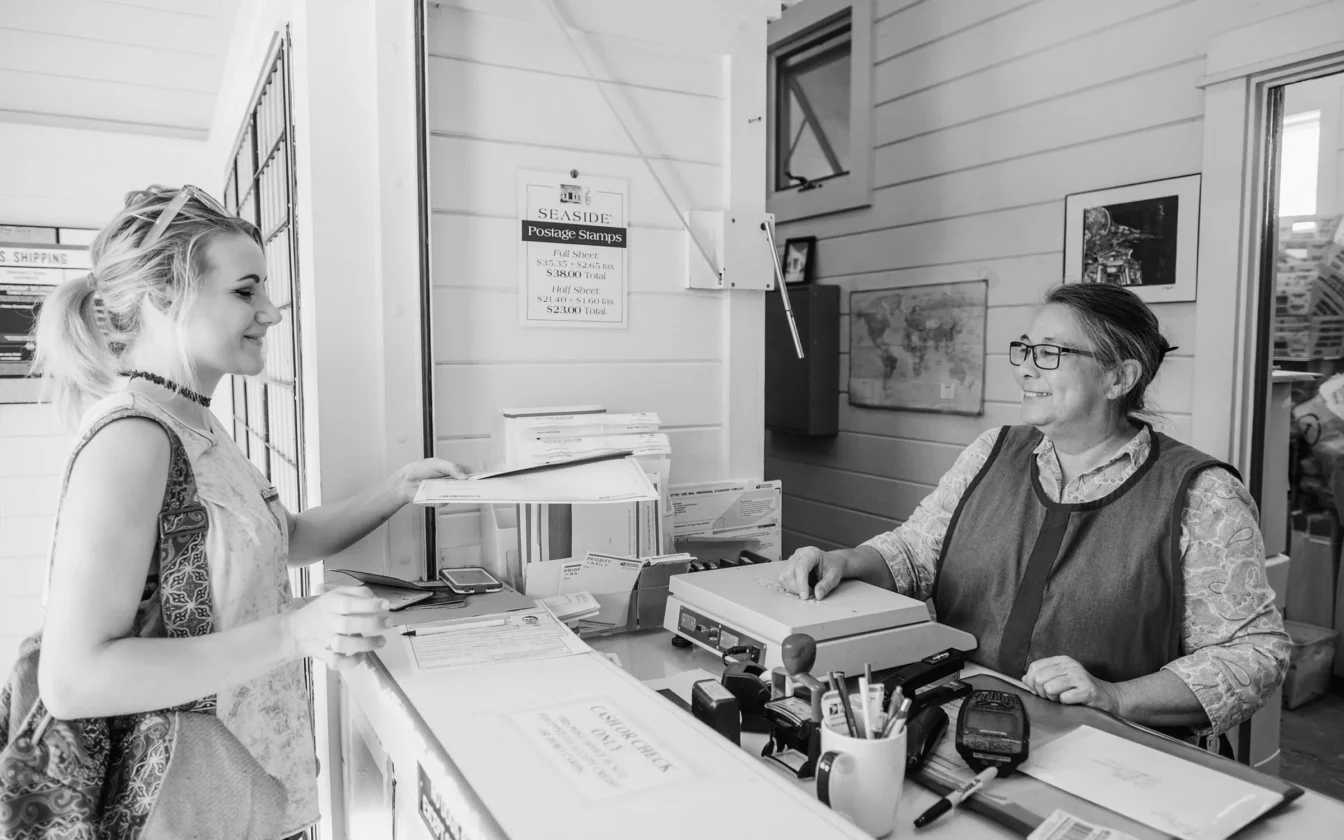
Love Letters: Seaside Times readers share their favorite memories
Thoughtfully planned to encourage spending time together, Seaside has been the setting for special occasions, including weddings, anniversaries, and family reunions. Everyday rituals, like morning coffee on the front porch a walk on the beach, are equally beloved. The Seaside Times asked some readers to share the reasons they return.
Ellen Potter, Prospect, Ky
I’ve always loved architecture and walkable neighborhoods. During a Disney World visit in 1986, I saved an article about Seaside from a Tampa newspaper. So, I guess I’ve known about Seaside at least that long. (I remember reading that Prince Charles was aware of the concept too!)
We first drove over from far west Panama City Beach in 1990, and drove over or rode our bikes there for every visit afterwards. We began staying on 30A in 2000, then in 2008, we stayed at Seaside the first time and have stayed there ever since.
We love that we can park our van and not have to drive again. Otherwise, what’s not to love? The beach pavilions, the different homes, the restaurants, the shops, the people. Even though we don’t own a vacation home, many of the Seaside people remember us each visit. Throw in the Gulf and voila, it’s a wonderful beach vacation.
Stephanie Cornett, Clay City, Ky
We vacationed in Destin for over 15 years and heard about beach towns on 30A.
We would drive over to 30A and eat and shop, and Seaside was our favorite. We stayed in Seaside for the first time this past December and loved it. Our family enjoyed biking and walking in and around Seaside. We will return! Our son popped the question to his girlfriend while we were in Seaside and a local professional photographer captured it all. It is definitely a vacation we will never forget!
Garrett Horn, Seagrove
I see memory, especially the memories of Seaside, like a big, massive fruit tree. It was an innocent sapling, at one time, barely able to cling to the sand, being blown by the summer storms, baked in the sun. And then this tree grew, year by year. And none of us really noticed each and every new branch, as they unfurled.
We perhaps, on occasion, noticed the leaves change colors and fall, and new leaves bloom in their place. We occasionally noticed the houses and buildings of Seaside blossom and grow vital, and beautiful, and fill our hearts with color and warmth. Then, because of the wear and tear of living next to the awesome power of the Gulf, we watched buildings become rough and weathered, and lose their usefulness, and some were torn down. We watched houses become severed from the ground and carted away. But, of course, new buildings emerged to take their place. New limbs were born from the giant tree.
The early motto of Seaside was: The New Town, The Old Ways. Now, it’s the Old Town of Seaside, with New Ways to enjoy as it evolves.
I remember hearing Robert Davis say, many decades ago, that Seaside would someday be a park in the middle of a totally urban environment. I had a difficult time envisioning that, at the time. I guess something in me just assumed things would always remain the same. I am certainly challenged these days to accept the urbanization of my quaint little hometown of Seagrove, but the tree of Seaside is still standing, the branches are strong and every-changing. And, as the seasons pass, we can always pause in our busy lives, and reach up to pluck “an apple of memory” from the tree, and savor the luscious, sweetness of time, itself.
Debbie McChesney, Seaside
Many of us have memories of our special place by the sea, digging toes in the sand or finding a perfect, unbroken sand dollar. Some of us have memories that involve waiting on an elevator to descend from a high-rise condo to reach the beach. The lucky ones remember climbing wooden steps to the top of a gazebo that towers over sand dunes covered with sea oats, hosting dozens of dragonflies, and a whole world of creatures beneath the brambles. My three children believed that the dragonflies were tooth fairies that came in the night to pick up their lost tooth and dip their wings in a bedside glass of water, turning the water shades of pink, blue or green.
The first time I saw Seaside was in the early 1980s. We were driving from Sandestin to have dinner at Bud & Alley’s. It was a foggy, rainy night with an occasional flash of lightning. As we drove the desolate stretch of 30A, Seaside appeared like a mirage. The small pastel cottages lined Robert’s Way, a path in the middle of nowhere, and seemed nothing short of magnificent. The electricity was out when we arrived so we dined off the grill by candlelight.
Sundog Books was a charming one-room bookstore with a sand-covered floor that rested behind the dunes. Bud & Alley’s was a short walk away, Sip and Dip, run by Charlie Modica, was next door and Modica Market was across 30A. Not much else existed. If you came to Seaside in January, it was wise to bring all your necessities.
Seaside is now filled with restaurants and shops; fun, imaginative, forward thinking places. Seaside is fluid, always changing, constantly seeking a better way of doing things. The Seaside Amphitheater received a major renovation and is now a strikingly beautiful stage fitting for the center of town.
The green spaces throughout are as important to the feel and fun as the shops and restaurants. In front of our house sits a beautiful space where the water tower once was. There is often a family playing bocce or Frisbee. Just yesterday I witnessed a woman taking her turtle out for a little sunshine. With all the development on 30A, it’s nice that in Seaside, our green space remains, respected and untouched.
During the pandemic, Seaside stepped up as the leader on 30A, turning the parking lot in to a beautiful yet functional eating area. The shops provide for social distancing and require masks. The SEASIDE Style® sells masks with Bud, the famous dachshund, emblazoned on the soft fabric.
Programs like the Seaside Repertory Theatre and Escape to Create (30A’s artist-in-residence program), continue to add purpose and mystique to our town and often lead to an ongoing relationship between the artists and 30A. But, most importantly, Seaside is just plain fun. The annual Halloweener Derby, a dachshund race that honors Seaside’s first dog, Bud; the Seaside Neighborhood School half marathon; shops like Duckies House of Fun and Central Square Records; the Seaside concert series and the Saturday morning Farmers Market all add up to create a special place that brings out the child in all of us.
Just tonight, I overheard a child leaving The Great Southern Café ask, “Mom isn’t this the most magical, perfect place in the world?” Her mom nodded, “Maybe so.”
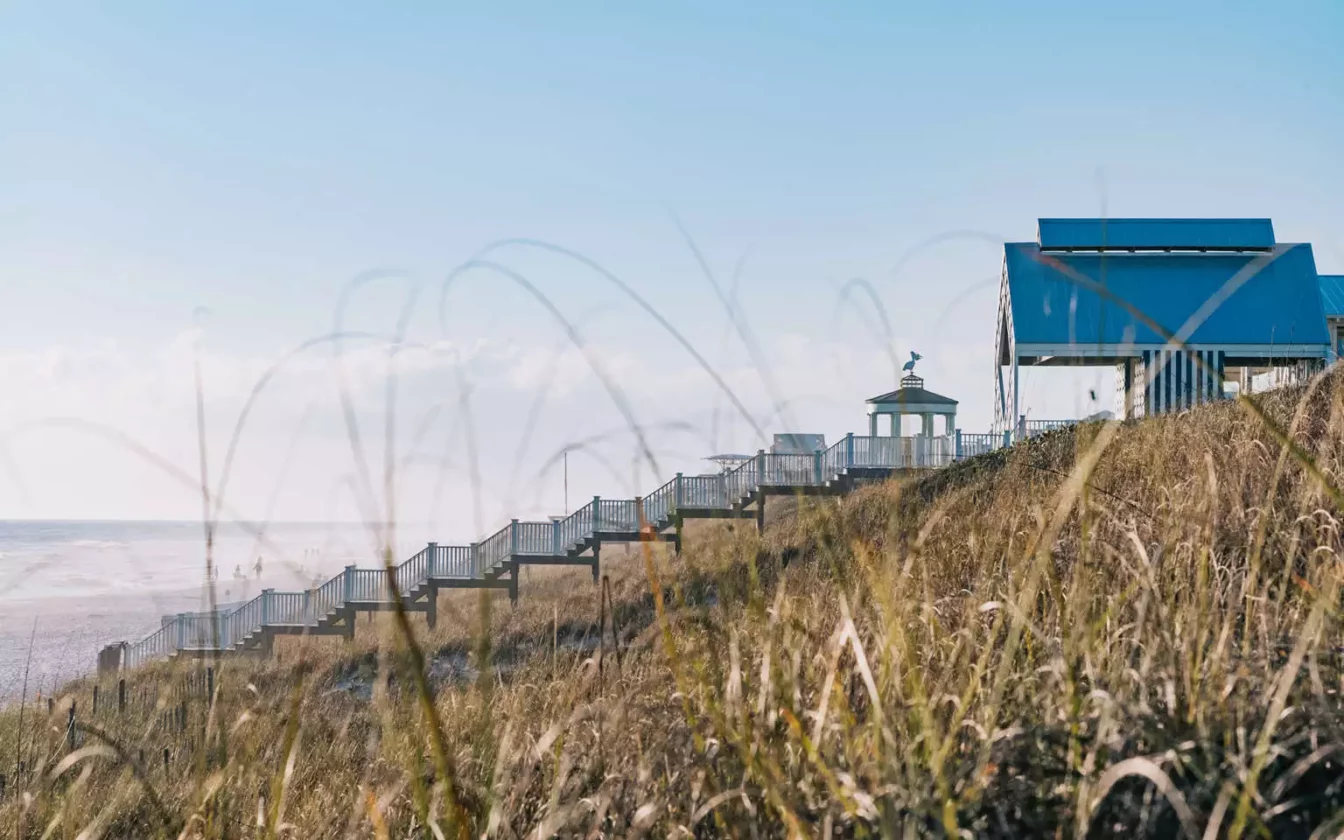
Seaside Celebrates 40 Years: Visions, Love and New Urbanism
It was 1981. President Ronald Regan took office, Walter Cronkite signed off on CBS Evening News for the last time, Space Shuttle Columbia had its ups and downs, and Raiders of the Lost Ark hit cinemas as the debut of Indiana Jones. That year, on the Gulf Coast of Northwest Florida, a legacy was also born.
Seaside founder Robert Davis and his girlfriend at the time (now wife), Daryl, were on set of a House Beautiful photo shoot for a home in Coconut Grove, Florida, when they met architects Andrés Duany and Elizabeth Plater-Zyberk in the late-1970s. The friendship formed that day would echo greatness for decades to come as the two couples worked together to create the town of Seaside, Florida. Known as the first example of New Urbanism town planning in the United States, the charming hamlet with white-sand beaches overlooking the Gulf of Mexico. What began as a few sharecropper cottages transported to the beach from Alabama became the vibrant tourist town full of renowned architecture, art, and culture that it is today. Seaside celebrates its fortieth anniversary in 2021.
New Urbanism became the vision resulting from Americans’ desire to return to a simpler, more beautiful life after the boom of national industry and urban growth. The idea of a town where people could live, work, play, and form friendships in one safe, walkable area began to ruminate in the minds of Seaside’s creators. The Davises had spent many road trips exploring rural towns across the country, studying communities and lifestyles that embraced that philosophy that sometimes less is more. Family, neighborhood, and happiness were staples in their desire to create a new development. Robert’s grandfather, J.S. Smolian, had left him a pristine half-mile stretch of beach and the land just north of it. Many fond family memories had been made there while building sandcastles, collecting shells, and watching the skies blaze with color as the sun sank beyond the Gulf. Robert knew it was the perfect place to build his New Urbanism oasis.
The Davises, Duany, and Plater-Zyberk set out to reinvent American small-town life both in design and prosperity—a monumental feat that would literally take a village to accomplish.
“When Daryl and I first dreamed of creating a town, we imagined experiences such as those we cherished from my childhood summers on the beach with my family, and Daryl’s summers on streets filled with children and adults sitting on front stoops,” Robert has said. “We wanted Seaside to be a place where families could leave behind their workday lives, slow down, and play together.” He continues, “We were aware that we were making a statement about how American small town urbanism could and should be revived, and that Seaside, as a pilot project for the revival of traditional urbanism, was a critique of the soul-sapping sprawl that had covered over so many fields and forests by 1981. But it wasn’t until several years later that Seaside became the birthplace for a movement.”
As Seaside gained steam, Davis enlisted more award-winning architects to create homes and community hubs within its limits. Léon Krier had been a consultant and inspiration for Duany and Plater-Zyberk (who went on to form their own firm, DPZ) during their town planning. His vision to create sandy footpaths throughout the town was also a stroke of brilliance still ingrained in the town’s identity. Architects Rodolfo Machado and Jorge Silvetti, along with Steven Holl, have their visions (and names) stamped on the commercial hub in Central Square, the town’s epicenter.
This appreciation and implementation of great architecture in a seemingly quaint town by the beach further spread Seaside’s revolutionary message throughout the late 1980s and the 1990s. The Congress of the New Urbanism was founded in 1993 with the help of DPZ, celebrating the movement’s significance in twentieth-century American architecture. The Seaside Prize was also formed as a weekend-long convention of some of the brightest minds in town planning and architecture, with lectures and events hosted by the Seaside Institute along with awards presented to visionaries who have changed the way people live through their designs.
Along the sandy pathway to perfectly melded form and function, Seaside’s cultural identity also grew. Southern travelers were drawn to its idyllic family owned shops, brick-paved streets, and tree-lined parks just as much as they were to the shimmering Gulf. The diverse homes planted throughout the eighty-acre community became homes away from home for those seeking a mix of privacy and neighborhood connections during their beach vacation. Today, families and visitors from around the world seek Seaside’s simple elegance for their getaways, relishing its hopeful exuberance and reverence for the “old ways” of living.
As it prepares to celebrate entering its fourth decade in 2021, Seaside looks back on all that has been accomplished by its founders and community members while also boldly embracing all that the future holds.
The town has seen many changes in recent years—visitors who know it only as the technicolor backdrop for the 1998 film The Truman Show would be surprised at its growth. But visionaries, by nature, are always improving upon their visions, and the creators of Seaside are no exception. A massive expansion to Bud & Alley’s Waterfront Restaurant and its surrounding outdoor courtyards is under way. The iconic Seaside Post Office was relocated in 2018 to the northeast corner of Central Square, making way for a planned tower designed by Léon Krier. The Lyceum and Seaside Neighborhood School have grown into a two-story classroom arcade with central events lawn and amphitheater.
Dhiru A. Thadani of Thadani Architects + Urbanists, a former Seaside Prize recipient, Seaside artist in residence, and author of Visions of Seaside, has worked closely with Robert Davis since 2011 to help realize many of these plans and propel Seaside into the future.
“I believe that the success of Seaside is based on love: Robert’s love for the land and the memories it holds; Daryl’s love for Robert and her willingness to move to a desolate part of Florida and aid him in realizing his dream; Andrés and Lizz’s love for humanity and their search for making a model sustainable community,” Thadani has said. “It shows in the homeowners and the millions of visitors who fell in love with the town the moment they set foot there and in the residents of Walton County who love the place and identify Seaside as home. In a conversation I had with the world-renowned Danish planner Jan Gehl, we concluded that great places could only be created if clients and designers truly loved people. That sentiment is the essence of Seaside’s success, making beautiful places for all people to enjoy, where they can love and feel loved.”
In short, Seaside has always been about family. The Davises’ son, Micah, has also opened his arms to the community his parents built. He now serves as President for the Seaside Community Development Corporation after moving to the area from San Francisco, where the family splits their time when they’re not enjoying sandy feet and fresh seafood along the Gulf Coast.
As Seaside plans its fortieth anniversary celebrations, keeping social distancing and COVID-19 safety precautions in mind, it also welcomes a new boutique hotel called The Court and Black Bear Bread Co., a bakery and cafe concept from Bud & Alley’sowner Dave Rauschkolb, is coming in 2021.
“We are so thrilled to continue growing and expanding the vision and the meaning of the Seaside lifestyle here along Scenic Highway 30-A,” says Erica Pierce, vice president at The Seaside Style. She and her team are spearheading the anniversary preparations, working alongside the Davis family and other town merchants. “Although we’ve faced many challenges in 2020, our community has remained a place where families can get away from it all and enjoy their time at the beach together. The lifestyle built here in Seaside is unlike any other. We are proud of what’s been created and so excited to see what the future holds.”
That future will include improvements and changes for the town, but its leaders see this growth as an opportunity rather than a detriment. Change is permanent, as they say, and it’s a philosophy Seaside has always embraced wholeheartedly.
“For me, Seaside is a living and continually changing laboratory for making places that add to human happiness,” Robert Davis wrote in VIE in 2014. “As a holiday town, it has a head start on making people happy. They come here, prepared to relax and let their hair down, to play with their kids and become more childlike themselves. The other towns that I know well—including Rome, Italy, and San Francisco, California—have the ability to make people happy through the conviviality of urban life, the opportunity to share great cuisine with friends and family, and the beauty of their architecture and urban spaces. Daryl and I have sought to learn from great cities and towns and incorporate our knowledge into making Seaside a place that combines beauty, fun, and funkiness in equal measure. Though it has become chic and fashionable, like any successful holiday town from Nantucket to Portofino, it is inclusive and accessible to almost everyone who wants to visit for a few hours or a few days.”
Cheers to forty more years of vision, love, and happiness, Seaside!

